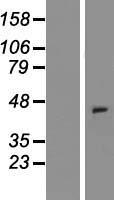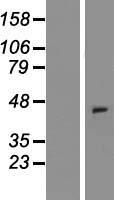order histories, retained contact details for faster checkout, review submissions, and special promotions.
Forgot password?
order histories, retained contact details for faster checkout, review submissions, and special promotions.
Locations
Orders Processing,
Shipping & Receiving,
Warehouse
2 Shaker Rd Suites
B001/B101
Shirley, MA 01464
Production Lab
Floor 6, Suite 620
20700 44th Avenue W
Lynnwood, WA 98036
Telephone Numbers
Tel: +1 (206) 374-1102
Fax: +1 (206) 577-4565
Contact Us
Additional Contact Details
order histories, retained contact details for faster checkout, review submissions, and special promotions.
Forgot password?
order histories, retained contact details for faster checkout, review submissions, and special promotions.
XCR1
chemokine (C motif) receptor 1
XCR1 is a chemokine receptor belonging to the G protein-coupled receptor superfamily. The family members are characterized by the presence of 7 transmembrane domains and numerous conserved amino acids. This receptor is most closely related to RBS11 and the MIP1-alpha/RANTES receptor. It transduces a signal by increasing the intracellular calcium ions level. The viral macrophage inflammatory protein-II is an antagonist of this receptor and blocks signaling. Two alternatively spliced transcript variants encoding the same protein have been found for this gene.
| Gene Name: | chemokine (C motif) receptor 1 |
| Family/Subfamily: | GPCR , Chemokine |
| Synonyms: | XCR1, CCXCR1, Chemokine (C motif) receptor 1, Chemokine XC receptor 1, G protein-coupled receptor 5, GPR5, Lptn receptor, Lymphotactin receptor, XC chemokine receptor 1, G-protein coupled receptor 5 |
| Target Sequences: | NM_005283 NP_005274.1 P46094 |
Publications (3)





If you do not find the reagent or information you require, please contact Customer.Support@LSBio.com to inquire about additional products in development.









